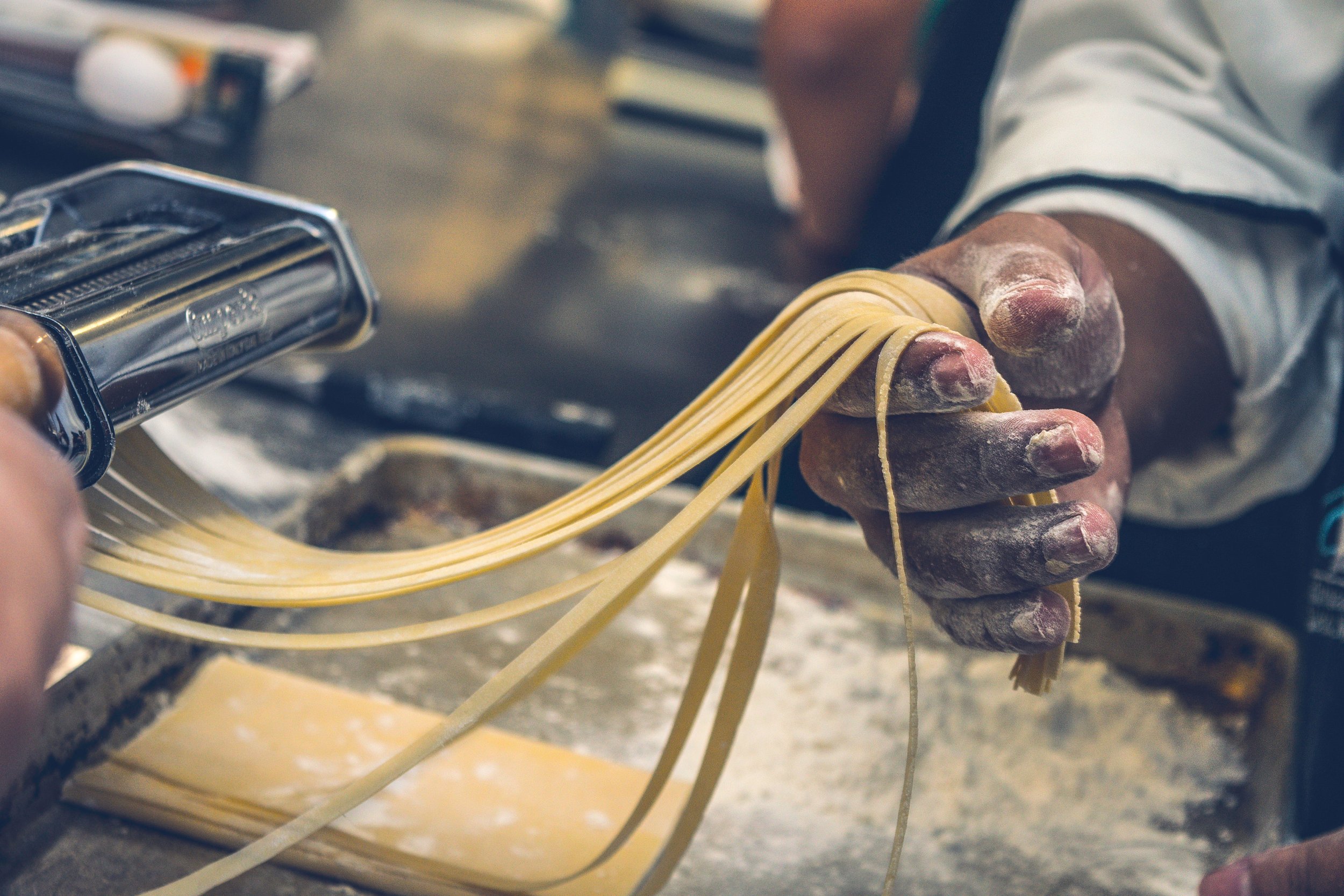Better by Design



From rustic and traditional to designer chic, the shapes and varieties of pasta can seem like an al dente avalanche. According to Oretta Zanini De Vita, the preeminent food scholar and Encyclopedia of Pasta author, there are more than 300 unique forms, each with distinct properties to serve a culinary need.
The right pasta can elevate a mediocre sauce; the wrong one can make even the finest dish feel disjointed.
This concept has long fascinated brilliant minds across creative disciplines. Philippe Starck, the elite architect and industrial designer, once created a new pasta shape for the French company Panzani. To achieve an airy tube that wouldn’t get mushy if overcooked, he added a swirled element in the middle, ensuring it remained open and light. Beloved automotive designer Giorgetto Giugiaro, who penned iconic cars for Maserati and Alfa Romeo, made a wavy shape for the Italian foods brand Voiello; called marille, the noodle recalled a Greek beta symbol, with ridges inside for “maximum sauce and flavor retention.” More recently, an exhibition at Tokyo’s Hara Design Institute featured more than 20 leading Japanese architects, all responding to a single design prompt: make new macaroni.
Still, nobody understands pasta quite like the people who prepare it. Chef Anthony Rush is the owner of Podmore, a brunch-and-cocktail spot opening soon in downtown Honolulu. He’s also co-founder of the James Beard-nominated restaurant Senia, known for its hand-crafted, Instagram-worthy pastas. Rush says you don’t need a fancy machine, just “some elbow grease” to roll out the dough into sheets, which you can then cut and shape. While the process might seem daunting, remember that traditional pasta is just egg, flour and water. Rush recommends a book by Thomas McNaughton and Paolo Lucchesi, aptly titled flour + water pasta, for anybody interested in going the homemade route. Once you’ve got a handle on the basics, he suggests experimenting with substituting the water in your dough mix for vegetable juices, like beet or spinach, to get those vibrant colors you see trending on social media.
One of Rush’s favorite dishes at Senia is a vegetarian sopressini (sort of a bow- or hat-shaped pasta) made using only flour, parsley and egg. It’s served with a green bean and mushroom sauce, a pairing that’s both deliberate and considered. In this regard, the pasta’s form should always follow its function. Here’s a handy cheat sheet:
THIN, LONG NOODLES
(capellini, linguini, spaghetti) work with lighter sauces (capers and olive oil, light seafood).
WIDE LONG NOODLES
(pappardelle, tagliatelle, fettucine) pair well with the heft of heartier meat sauces (bolognese, rich ragus).
HOLLOW TUBES
(penne, rigatoni) are great for holding heavier sauces that would wilt under a thin noodle.
TWISTS
(gemelli, fusilli) are ideal for pasta salads, where bits of cheese, veggies or a protein should mingle for a bal- anced bite.
FILLED PASTAS
(tortellini, ravioli, agnolotti) are the star of the plate! Sauces are generally smooth without much added texture.
Of course, shape isn’t everything. But, just as the right stemware elevates the wine, the right alignment between sauce and pasta makes a difference. Whether you’re going store-bought or homemade, make sure it’s prepared with thought. Buon appetito!
